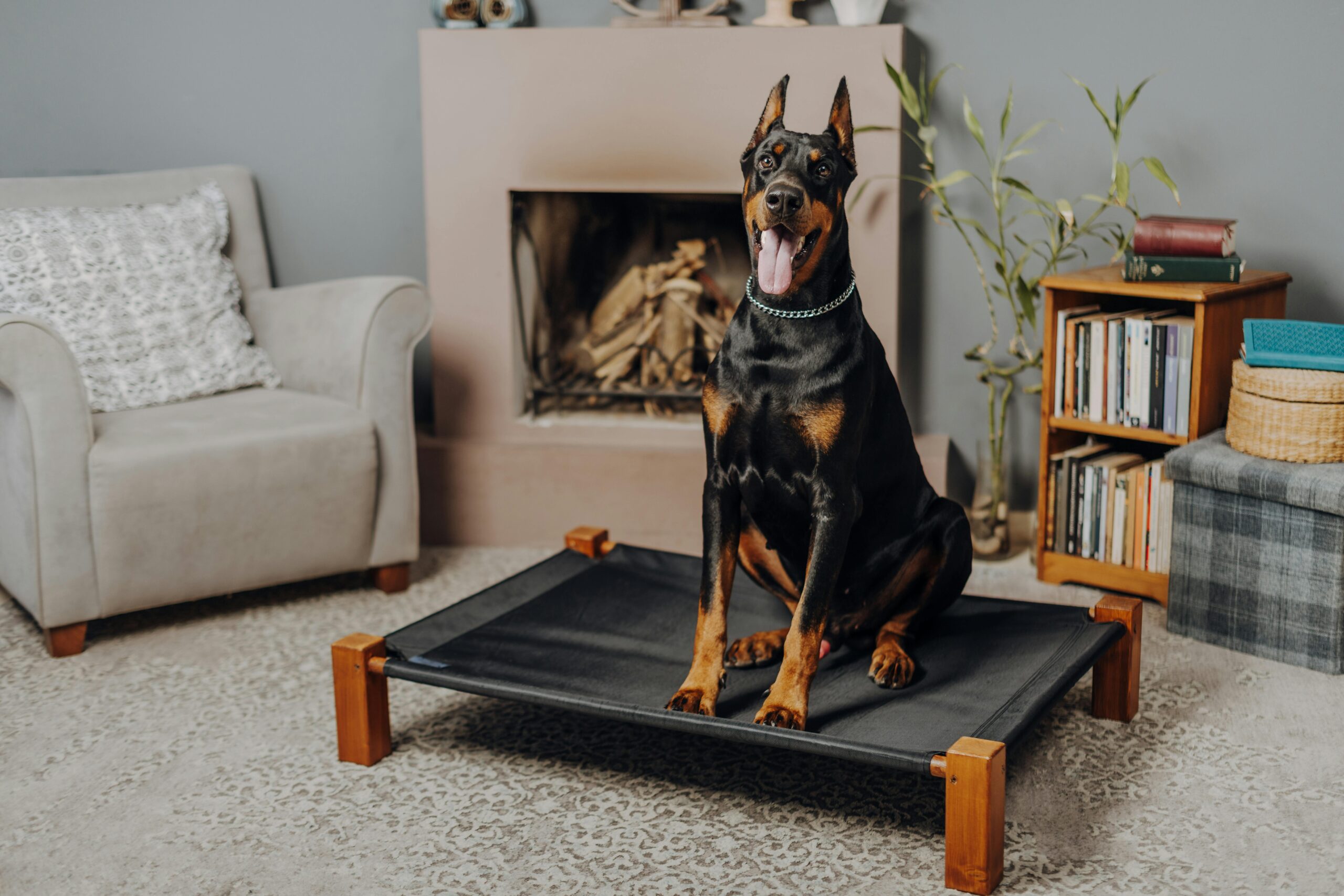Your cart is currently empty!

How to Teach a Dog to Stay
Posted by:
|
On:
|
Teaching your dog the “stay” command is essential for their safety and discipline. Whether keeping them from running into traffic or holding still for a photo, “stay” is an invaluable skill for any dog to master. This guide will walk you through the process, using positive reinforcement to make learning enjoyable for your dog.

Why Teach the “Stay” Command?
A well-taught “stay” command helps your dog understand boundaries, improves focus, and makes them more responsive to your cues. It’s beneficial in various real-life situations, from waiting while you order coffee at a cafe to greeting visitors calmly. The “stay” command is also an excellent foundation for building other skills, such as advanced obedience or trick training.
What You’ll Need
- High-value treats: Pick small, tasty treats that are easy for your dog to eat quickly.
- Clicker (optional): If you use clicker training, this can help reinforce the command.
- Patience and consistency: Teaching “stay” can take a little time, especially for puppies or excitable dogs.
Step-by-Step Guide to Teaching “Stay”
1. Choose a Quiet Location
Start in a calm, quiet space with few distractions. You’ll want your dog to focus on you without outside noises or temptations.
2. Start with a “Sit” or “Down” Command
Begin by asking your dog to sit or lie down. A stable starting position helps them stay in place more easily.
3. Introduce the “Stay” Command
- Once your dog is in position, hold your hand out like a stop signal. Say “Stay” in a calm, firm voice.
- Wait for a second or two, then immediately give them a treat and praise them if they held the position.
4. Gradually Increase the Duration
- After each successful attempt, gradually increase the time before you give a treat. For example, start with 1-2 seconds, then 3-4, and so on.
- Always release them with a word like “Okay!” or “Release!” to let them know they’re free to move.
5. Add Distance Gradually
- Once your dog can stay in place for several seconds, try taking a step back after you say “Stay.”
- If they remain in position, praise and treat them. If they break the stay, calmly lead them back to their starting spot and try again without punishment. If a step away is too far, try half a step.
6. Practice in Different Locations
- Dogs learn best with varied practice, so repeat the training in different locations. Try training indoors, in the backyard, or at the park.
- Gradually add mild distractions to help your dog learn to stay in place in different situations.
Tips for Successful Training
- Use High-Value Rewards
Reward your dog with treats they love to reinforce positive behavior. - Keep Sessions Short
Aim for 5-10 minutes per session, especially with young dogs or puppies. Ending on a positive note keeps your dog motivated. - Stay Patient
Every dog learns at their own pace, so avoid frustration if your dog doesn’t get it right away. - Practice Often
Consistency is key to making the command stick. Practice daily, even for just a few minutes. - End Each Session on a Positive Note
If your dog struggled during training, finish with a command they know well. That way, they leave the session feeling successful.
Troubleshooting Common Challenges
- If your dog breaks the “stay”: Go back a step. Reduce the duration, distance, or distractions until they succeed.
- If your dog becomes frustrated: Break training into very short sessions, offering plenty of praise and treats.
- If they’re struggling with distractions: Make sure the distraction level is appropriate. Gradually increase distractions as they improve.
Practicing the “Stay” Command in Real Life
Once your dog reliably understands “stay,” start using it in real-life scenarios. Ask them to “stay” before crossing the street, when you’re opening the door, or when you need them to wait patiently.
Final Thoughts
With patience, consistency, and positive reinforcement, your dog will soon learn to stay on command. This training builds trust between you and your dog, keeping them safe and well-behaved in any situation. Remember, every small success brings you closer to a dog that’s a joy to live and work with. Happy training!

